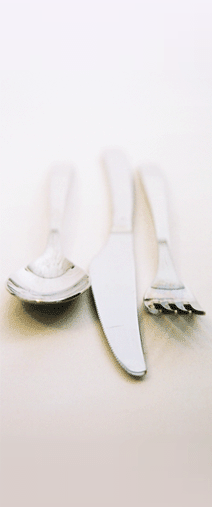I have been making a Confit of Duck legs for years ;in Dwyers in Waterford first and latterly here in le Presbytere. It is an ideal dish for the Table d’Hote as most of the cooking is done in advance.
A confit was the French farm wife’s equivalent of the freezer with one important difference, meat stored in fat, as in a confit, actually improves and deepens in savour and becomes more moist and tender.
The classic confits here in the South West of France are of Goose and Duck and their raison d’etre is really quite simple. The geese and duck in this part of the world were principally reared for Foie Gras, the utterly delicious melting liver now banned in most parts of the USA.(Where you can pick up a gun in a corner store!)
The farmers wife usually had to harvest her geese or ducks at much the same time and thereby needed some method of preserving the surplus, and so was born the confit.
Making it is a simple process. One rubs the meats in salt and aromatic herbs, after 24 hours rub them down, fry them crisp in their own fat and then simmer them slowly in their fat until so tender that they can be pierced with a straw. These can then be stored, completely sealed in fat for up to a year .
This was more or less the method I had been using since I first made them many years ago in Waterford.
However after we had eaten the last batch My staunchest critic (and wife) told me that she thought they were a bit stringy and might be overcooked.
Now it is a fact that the Duck in France is both larger and more tender than his cousin in Ireland- no doubt due to both the breeds used and to the farming methods- so I saw her point and thought it was time to go back to the drawing board.
Now if ever I need precise and accurate instructions for a French recipe the lady I return to is Julia Child and her bible : Mastering the Art of French Cooking.
She had this to say:
“Modern freezers and refrigerators have made changes in the Confit traditions. In the old days you had to simmer the duck for at least 2 ½ hours until every bit of moisture had evaporated and a straw could pierce the meat with ease ; you were then sure it would keep through the winter packed in its jars of fat in your cellar. For our purposes, since we are more interested in taste than tradition, the duck is cooked only until done and it is then stored in its fat in the refrigerator.”
Sound Woman Julia !
So, since I was now following Madame Child’s instructions for cooking confit it seemed imperative that I also follow her directions for the earlier salting. Here again she had precise instructions:
“Salt the Duck for 24 hours using half the ingredients for the dry-salt cure for pork or add duck to the cure along with the pork you are doing”
Now I will have to digress.
I had my first Christmas in France this year and, with all my family coming, was anxious to honour both the Irish and the French Christmas traditions. This led me to the problem of the Baked Ham, now I have eaten this- mainly in motorway cafes- many times but have never seen it for sale. As I was ordering my Turkey and Goose from my friendly butcher in the village I asked him if he could manage to produce a Jambon Cru for me as well. Now the vast majority of Jambon here is eaten uncooked as that of Bayonne or Parma in Italy so I went to some extremes to explain what I wanted.
When I took my big box of Christmas tuck home from the butchers I soon realised that I had been misunderstood and my Jambon Cru was, basically, a leg of pork.
Nothing daunted I sawed the leg in two, cooked half for Christmas (it was excellent cold on Stephens Day) and froze the other half with an eye to doing something with it later.
Now it seemed my moment had come.
Back I went to Julia’s recipe for dry-salt cure for Pork..
Her recipe for the Salts and Aromatics consisted of : Salt, Sugar, Saltpetre, Juniper Berries, Peppercorns, Allspice, Thyme and Bay Leaf.
Now God was certainly on my side all of these ingredients (even the Saltpetre- a relic from making Spiced Beef) could be produced from my larder or garden so, on Saturday I took the half leg of pork from the freezer and gave it two days to thaw in the fridge and I bought 16 Duck legs in La Ferme Biterroise.
Yesterday I boned out my thawed piece of Pork (as instructed by Julia) and threw all of the dry salt cure ingredients into the magimix to crush to a coarse powder, and got my largest enamel pot, and having rubbed both the Duck and the Pork thoroughly in the half of the mix I packed them into the pot and put them into the coldest room in the house.
This evening, 24 hours after insertion, I will remove the duck and cook exactly as Julia instructed.. In 5 days time I will add the remaining salt cure ingredients to the pot and then leave the pork turn slowly into Bacon for ten days more.
Watch this space.
